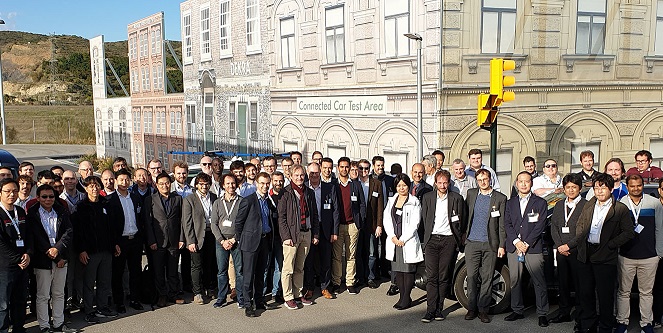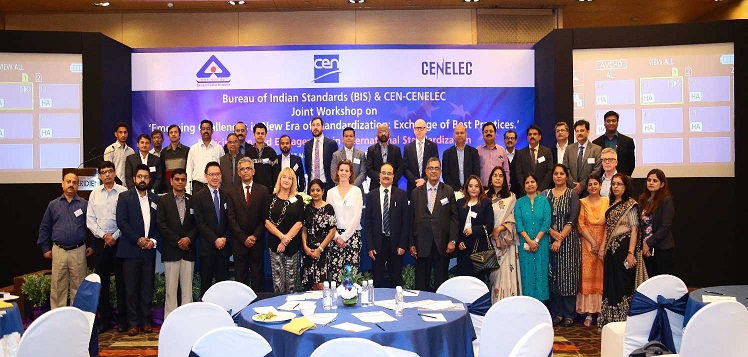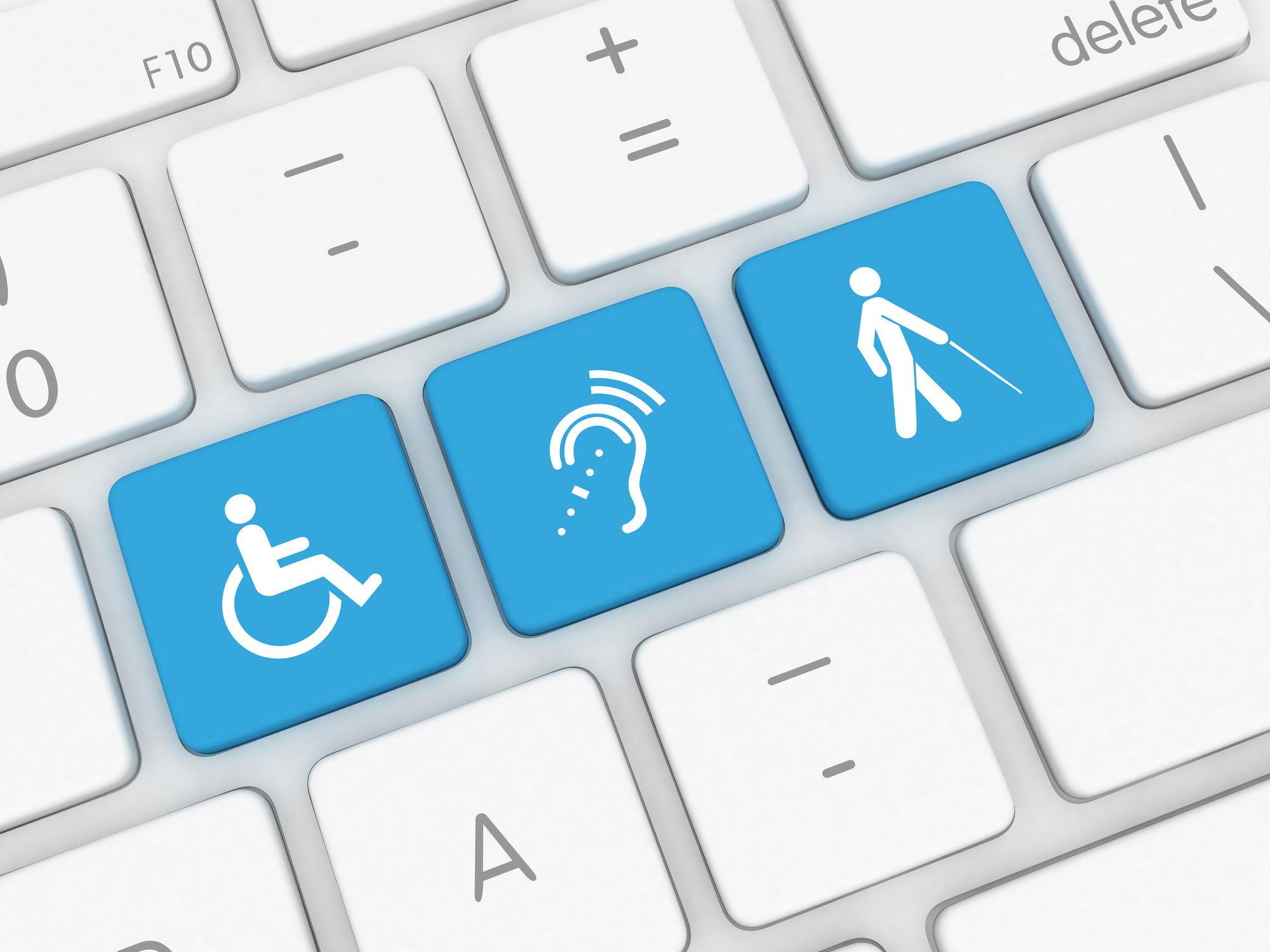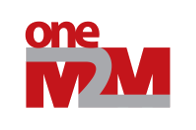The first ETSI C-V2X Plugtests, performed in partnership with 5GAA, came to a close with a success rate of 95% of the executed tests, showing an extremely positive level of multi-vendor interoperability. 320 test scenarios were executed in lab and field environments for interoperability with 70 people present onsite for testing.
This event enabled vendors to run test sessions to assess the level of interoperability of their implementation and validate the understanding of the ETSI TC ITS and 3GPP standards. The ETSI 5GAA joint workshop which was organized in parallel, addressed C-V2X interoperability and deployment. Leading speakers from the European Commission, the Dutch Ministry of Infrastructure and Global Certification Forum presented the latest updates on ITS deployments and certifications. This week-long face to face PlugtestsTM , provided an opportunity to test C-V2X devices. Field interoperability testing included road hazard signalling, road works warning, longitudinal collision risk warning and intersection collision risk warning.
Boosting Innovation Through Standards
CEN and CENELEC held the high-level 1- day Standards + Innovation Conference ‘Boosting Innovation Through Standards’ with the aim of fostering the market uptake of innovation and research outcomes by using standardization as an enabler. Leading experts in innovation and standardization presented their experiences in linking the two worlds and highlighted how each one is benefiting from the other. Know more about the conference and how standards can boost innovation thanks to the new dedicated webpage.
Discover how European standards contribute to the success of research and innovation activities, facilitating market uptake, finding partners (e.g. industry, policy, consumer) for your activities, using existing knowledge, transferring know-how or easing the access to financial resources.
CEN and CENELEC announced that, after two years of continuous dialogue with all actors involved in the citation process, the EC has cited in the Official Journal of the European Union (OJEU) several lists of Harmonised European Standards (hENs). This important development signals a relevant turn in the process of reducing the citation backlog of harmonised standards, to the benefit of the industry and consumers.
In particular, the lists of standards cited cover the following sectors: Toys safety, New Legislative Framework, Electromagnetic Compatibility, Explosives Atmospheres, Pressure Equipment, and General Product Safety. Overall, this citation exercise includes more than 60 new references.
CEN and CENELEC Members have identified India as a key priority market. The objective of CEN and CENELEC is to cooperate more closely with the Bureau of Indian Standards (BIS) and other relevant Indian standardization bodies on various topics of mutual interest, in order to create synergies. As a first step towards creating a close working relationship with BIS and to understand the commonalities and gaps on standardization strategy and the standards development process, a two-day joint workshop was organised by BIS and CEN & CENELEC on 26th and 27th November 2019 in New Delhi, India. The workshop helped identify significant common areas of mutual interest between BIS and CEN & CENELEC, which will be explored further for collaboration between the two regions.
CEN, CENELEC and ETSI, the three European Standardization Organizations (ESOs), jointly developed EN 301549:2019 ‘Accessibility requirements for ICT products and services’. The new standard is intended in particular for use by public authorities and other public sector bodies during procurement, to ensure that websites, software and digital devices are more accessible – so they can be used by persons with a wide range of disabilities.
EN 301549:2019 sets out the functional accessibility requirements that can be applied to all digital technology, including websites, software, electronic devices, and mobile apps. The aim is to ensure that ICT products and services are accessible either directly or through compatibility with assistive technologies such as text-to-speech, so that everyone can access information and use services that are being delivered electronically. The new standard is a revision of a previous version, published in 2018. It sets out the functional accessibility requirements that can be applied to all digital technology, including websites, software, electronic devices, and mobile apps.
European Commission had published its Circular Economy Action Plan in 2015 and requested the three ESOs – CEN, CENELEC and ETSI - to develop standards to support Ecodesign requirements on material efficiency aspects for energy-related products, covering the following aspects: extending product lifetime, ability to reuse components or recycle materials from products at end-of-life, use of reused components and/or recycled materials in products. In this context, the CEN-CENELEC JTC 10 ‘Energy-related products - Material Efficiency Aspects for Ecodesign’ (CEN-CLC/JTC 10) has published the following standards in 2019:
- EN 45555:2019 ‘General methods for assessing the recyclability and recoverability of energy-related products’;
- EN 45556:2019 ‘General method for assessing the proportion of reused components in energy-related product’
- EN 45558:2019 ‘General method to declare the use of critical raw materials in energy-related products’;
- EN 45559:2019 ‘Methods for providing information on material efficiency aspects of energy-related products’.
Blockchain and Distributed Ledger Technologies (DLTs) are among the most promising developments in ICT for sharing data and managing transactions in a decentralised, controlled manner. The use of Blockchain and DLTs continues to grow rapidly, notably in the context of Industry 4.0, thus creating both new opportunities and challenges for business and society. In order to contribute to ensuring a smooth and safe adoption of new technologies in Europe, CEN and CENELEC recently established new CEN-CENELEC JTC 19 ‘Blockchain and Distributed Ledger Technologies’, based on the recommendations presented in the CEN-CENELEC White Paper on ‘Recommendations for Successful Adoption in Europe of Emerging Technical Standards on Distributed Ledger/Blockchain Technologies’.
The European Commission (EC) has published recommendations by a group of experts, the Strategic Forum on Important Projects of Common European Interest (IPCEIs), to boost Europe's competitiveness and global leadership in six strategic and future-oriented industrial sectors: Connected, clean and autonomous vehicles; Hydrogen technologies and systems; Smart health; Industrial Internet of Things; Low-carbon industry; and Cybersecurity. IPCEIs comprise innovative research projects that often entail significant risks and require joint, well-coordinated efforts and transnational investments by public authorities and industries from several Member States. In addition to recommendations specific to each of the value chains, the report also identifies horizontal enabling actions:
- Pooling public and private resources at EU, national and regional levels; The EU should coordinate these joint investments, targeting first industrial deployment and the commercialisation of new technologies;
- Deepening and integrating the single market through regulations and new standards;
- Mapping and developing the skills needed across the value chains;
- Making innovation systems in Europe more dynamic, with a focus on public-private partnerships;
- Setting a governance process to monitor technological and industrial changes, etc.
A new joint whitepaper released by The Industrial Internet Consortium® (IIC™) and oneM2M, reveals how developers seeking to reduce complexity when designing Internet of Things (IoT) and Industrial Internet of Things (IIoT) systems, can leverage different architectural approaches side-by-side to enable faster-time-to-market of new Industrial services and use cases. The joint whitepaper, “Advancing the Industrial Internet of Things”, demonstrates how these two leading IoT organizations are working together to advance the IIoT and digital transformation, through the creation of a robust, interoperable, flexible and efficient IIoT ecosystem. Through their work, the IIC and oneM2M aim to help vertical markets achieve interoperability and reusability, by minimizing complexity and the cost of designing, developing and deploying IoT and IIoT systems to shorten time-to-market and value-creation cycles. With a focus on practical deployment tools, the white paper describes how the IIC’s and oneM2M’s architectural approaches can be aligned to provide a toolkit of best practices and technical standards for organizations involved in the design and deployment of IIoT systems.














